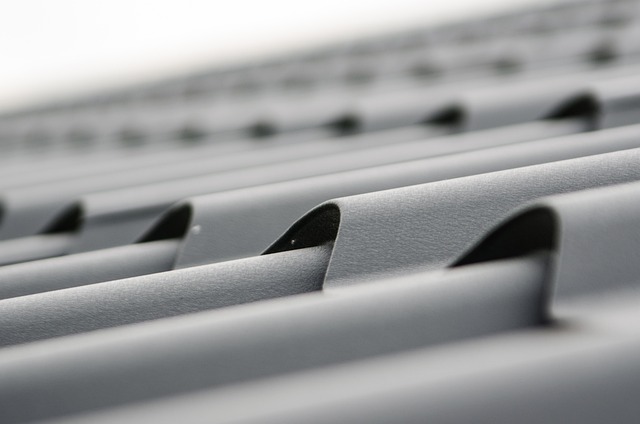Selecting durable and weather-resistant materials for a professional flat roof installation is vital for long-term protection, energy efficiency, and cost savings. Lightweight options like fiberglass and polymeric foams reduce structural strain, while high-quality membranes like PVC or TPO resist extreme weather, UV rays, and mold growth. Regular maintenance, including inspections, cleaning, and waterproof coatings, ensures the longevity and integrity of these professional flat roof installations.
In the pursuit of durable and reliable roofing solutions, especially for flat roofs, selecting weather-resistant materials is paramount. This article delves into the significance of lightweight yet robust materials in ensuring the longevity of your flat roof. We explore various options suitable for professional installations, highlighting their benefits in extreme weather conditions. Furthermore, we provide insights on choosing cost-effective products and offer expert maintenance tips to preserve your roof’s performance over time.
Understanding Weather-Resistant Materials: Key to Flat Roof Longevity
When it comes to ensuring the longevity of a flat roof, understanding and selecting the right weather-resistant materials are paramount. These materials play a crucial role in protecting the roof from the elements, preventing damage, and extending its lifespan. In the context of professional flat roof installation, this involves choosing substances that can withstand harsh weather conditions, including rain, snow, extreme temperatures, and UV radiation.
Weather-resistant materials not only offer protection but also contribute to energy efficiency and cost savings in the long run. By selecting appropriate options, such as high-quality membranes or coatings, roofing professionals can create a robust barrier against water penetration, mold growth, and other potential issues. This proactive approach guarantees that the flat roof remains in excellent condition, providing years of reliable service.
Lightweight Options for Professional Flat Roof Installation
When it comes to professional flat roof installations, choosing lightweight materials is a smart move for several reasons. Traditional heavy options can put immense strain on structural supports, especially in older buildings or those with lower load-bearing capacities. By opting for lighter alternatives, installers can reduce the overall weight burden, ensuring the integrity and longevity of the structure.
For flat roofs, materials like fiberglass, polymeric foams, and certain types of metal sheets are gaining popularity among professionals. These lightweight options offer excellent weather resistance, making them ideal for withstanding harsh environmental conditions. Their durability and low maintenance requirements make them a cost-effective choice in the long run, providing peace of mind for building owners.
Benefits of Using Durable Materials in Extreme Weather Conditions
Using durable materials for a professional flat roof installation is paramount in extreme weather conditions. These materials are designed to withstand harsh elements like heavy rainfall, strong winds, and blazing sunlight, ensuring your roof remains intact and structurally sound over extended periods. The benefits extend beyond structural integrity; weather-resistant materials also save on maintenance costs, as they are less prone to damage, peeling, or degradation.
Moreover, longevity is a significant advantage. Durable roofs require fewer repairs and replacements, offering cost-effectiveness in the long run. They protect your home from potential leaks, water damage, and other weather-related issues, contributing to a safer and more comfortable living environment. In harsh climates, making an investment in robust materials for flat roof installation is a practical decision that offers both peace of mind and significant savings.
Choosing the Right Products for Long-Term Performance and Cost-Effectiveness
When considering materials for a professional flat roof installation, selecting those that offer both durability and cost-effectiveness is key. High-quality, weather-resistant options like reinforced PVC or TPO membranes are excellent choices. These materials possess superior resistance to extreme temperatures, UV rays, and various environmental factors, ensuring longevity and minimizing maintenance needs.
By opting for these durable solutions, homeowners and professionals alike can save on long-term costs associated with repairs or replacements. Investing in robust materials initially translates into a more sustainable and cost-efficient roofing system over time, providing peace of mind and protection against the elements.
Expert Tips for Maintaining a Weatherproof Flat Roof
A well-installed flat roof is a formidable defense against the elements, but maintaining its weatherproofing is essential for longevity. Here are some expert tips tailored to those with professional flat roof installations: Regular inspection is key; look for signs of damage like missing or torn shingles, especially after intense storms. Promptly addressing these issues can prevent costly repairs down the line. Additionally, inspect for proper drainage systems—clogged gutters or blocked drains can lead to water accumulation and potential roof damage.
Waterproof coatings are another vital component in maintaining a weatherproof flat roof. Applying or reapplying these coatings as recommended by manufacturers helps create an extra barrier against moisture intrusion. Keep your roof free from debris, as even small accumulations can trap water and compromise the sealant’s effectiveness. Regular cleaning, especially after significant weather events, ensures optimal performance of your waterproof membrane.
When it comes to a professional flat roof installation, prioritizing weather-resistant materials is key. By selecting lightweight options that can withstand extreme conditions, you ensure longevity and cost-effectiveness. This article has guided readers through the process, offering insights on durable materials, benefits in harsh weather, and expert tips for maintenance. With these strategies, homeowners and professionals alike can confidently navigate the market, making informed decisions to protect their roofs and avoid costly repairs.
